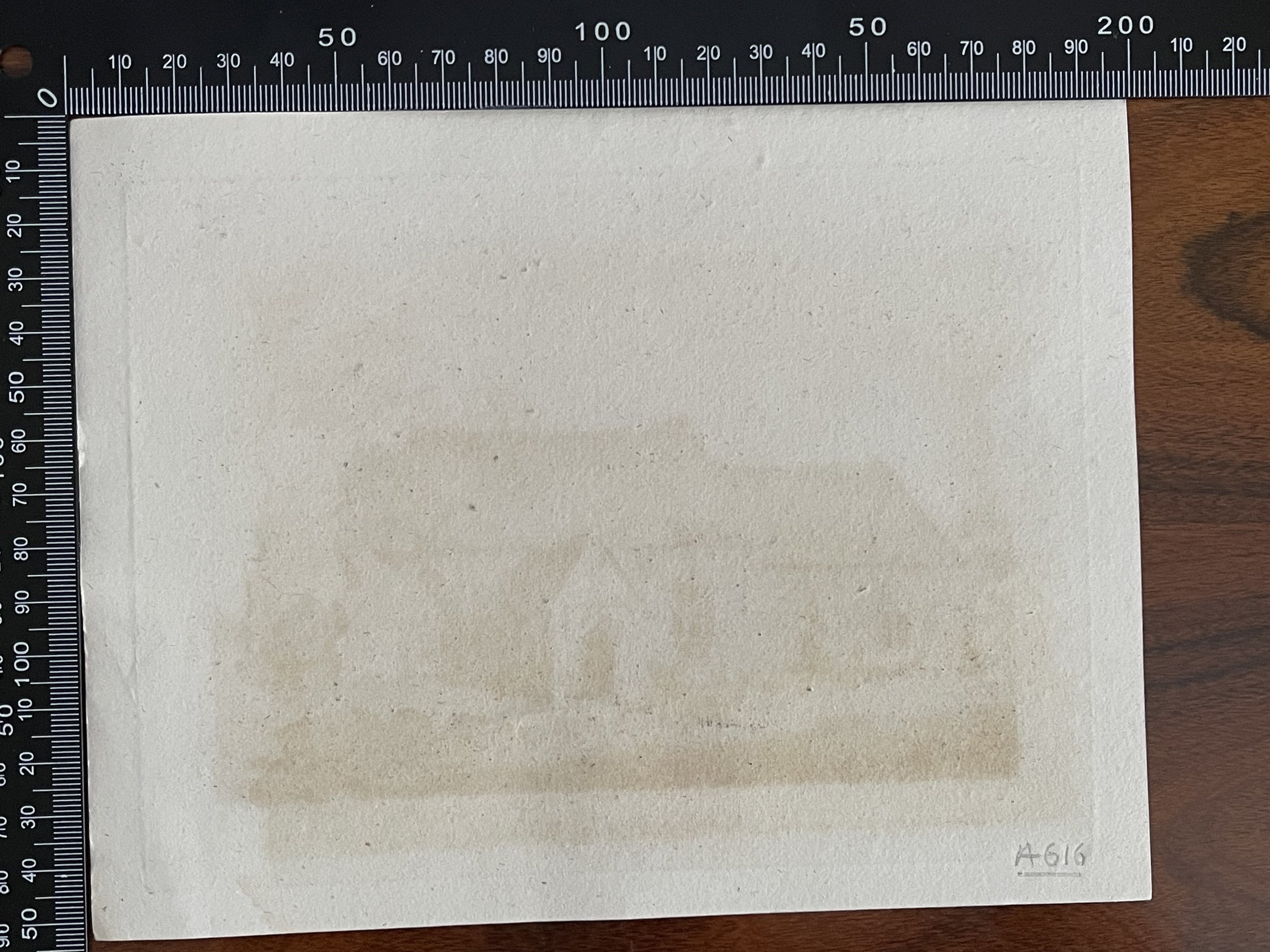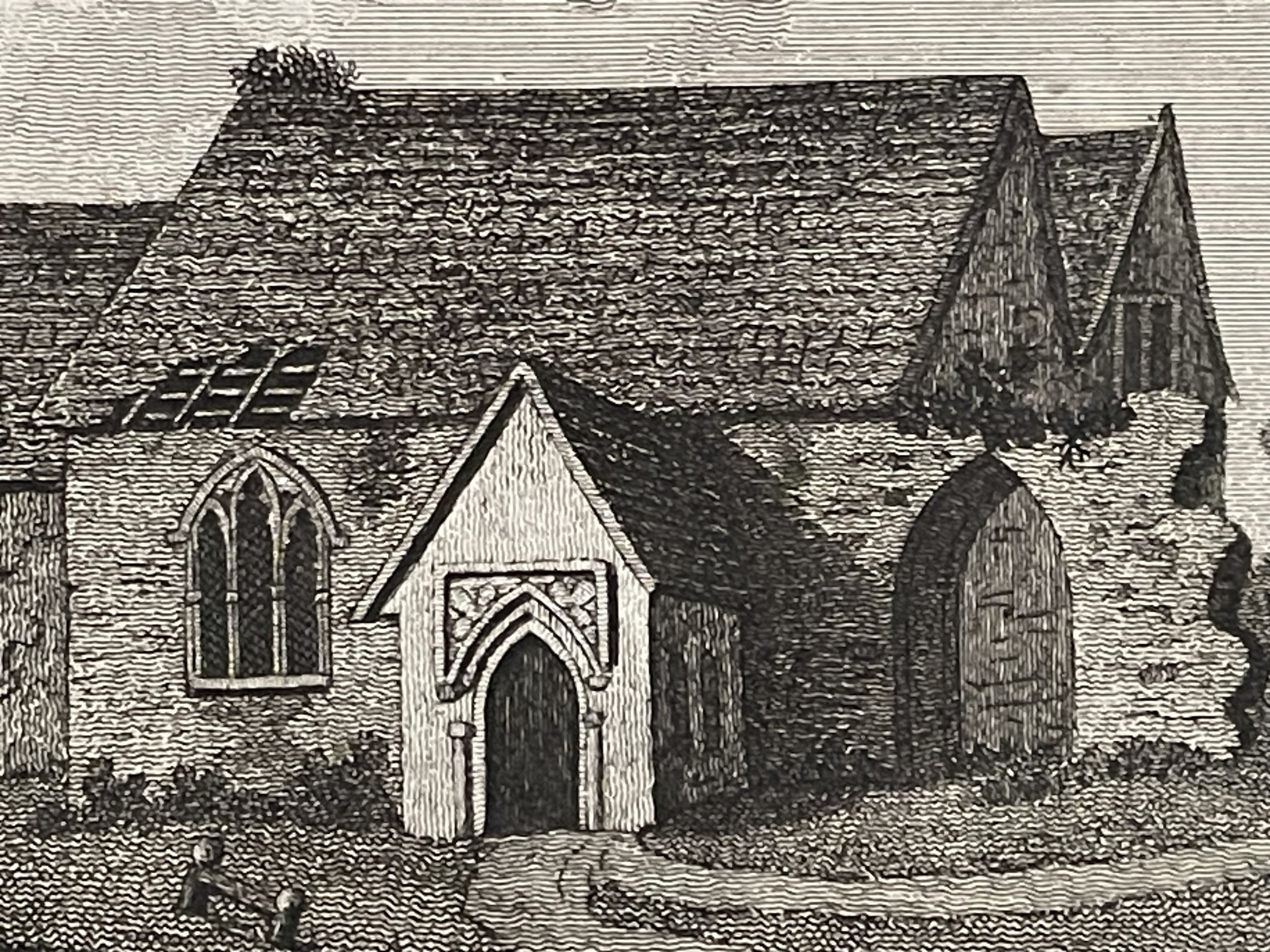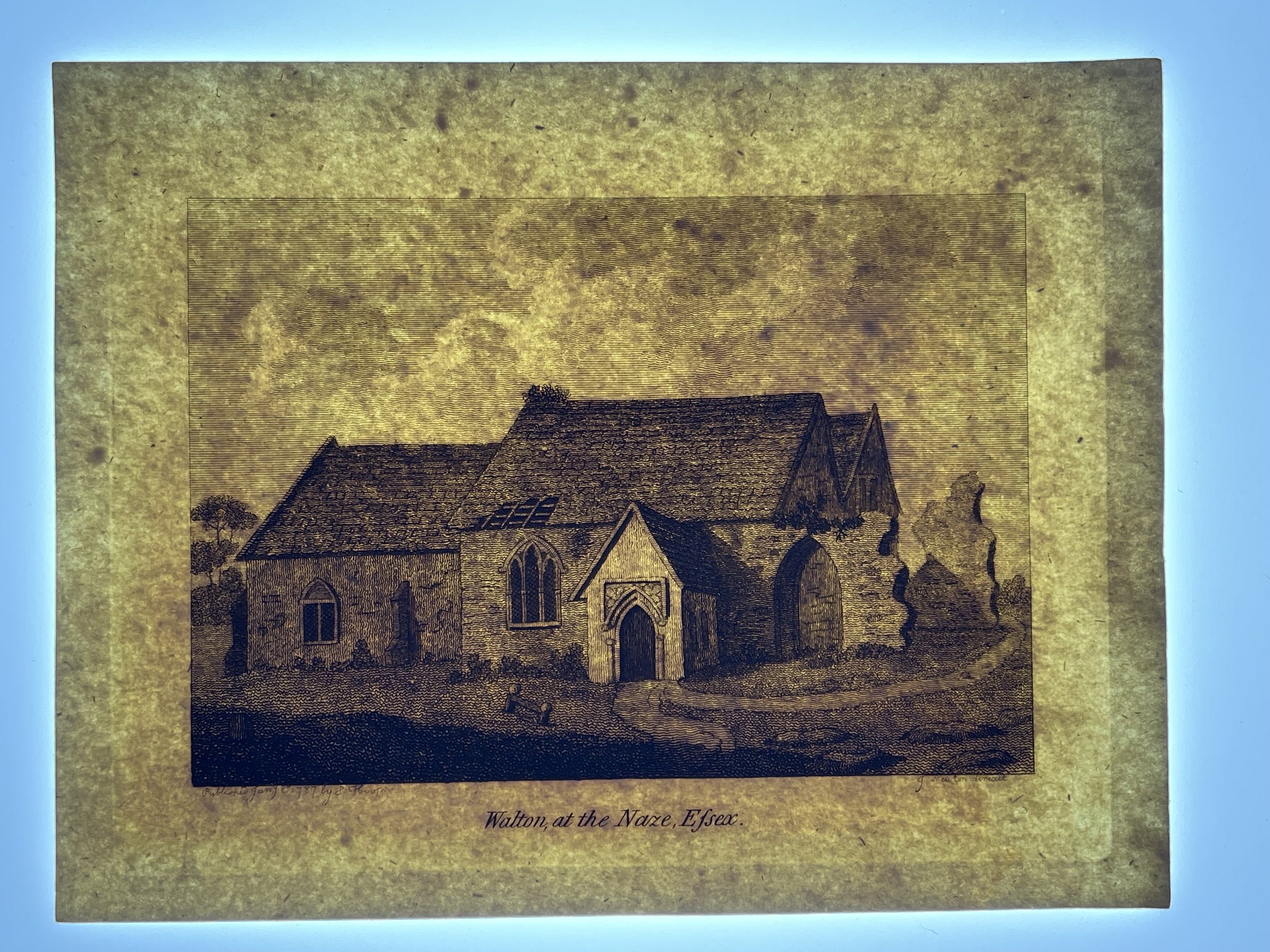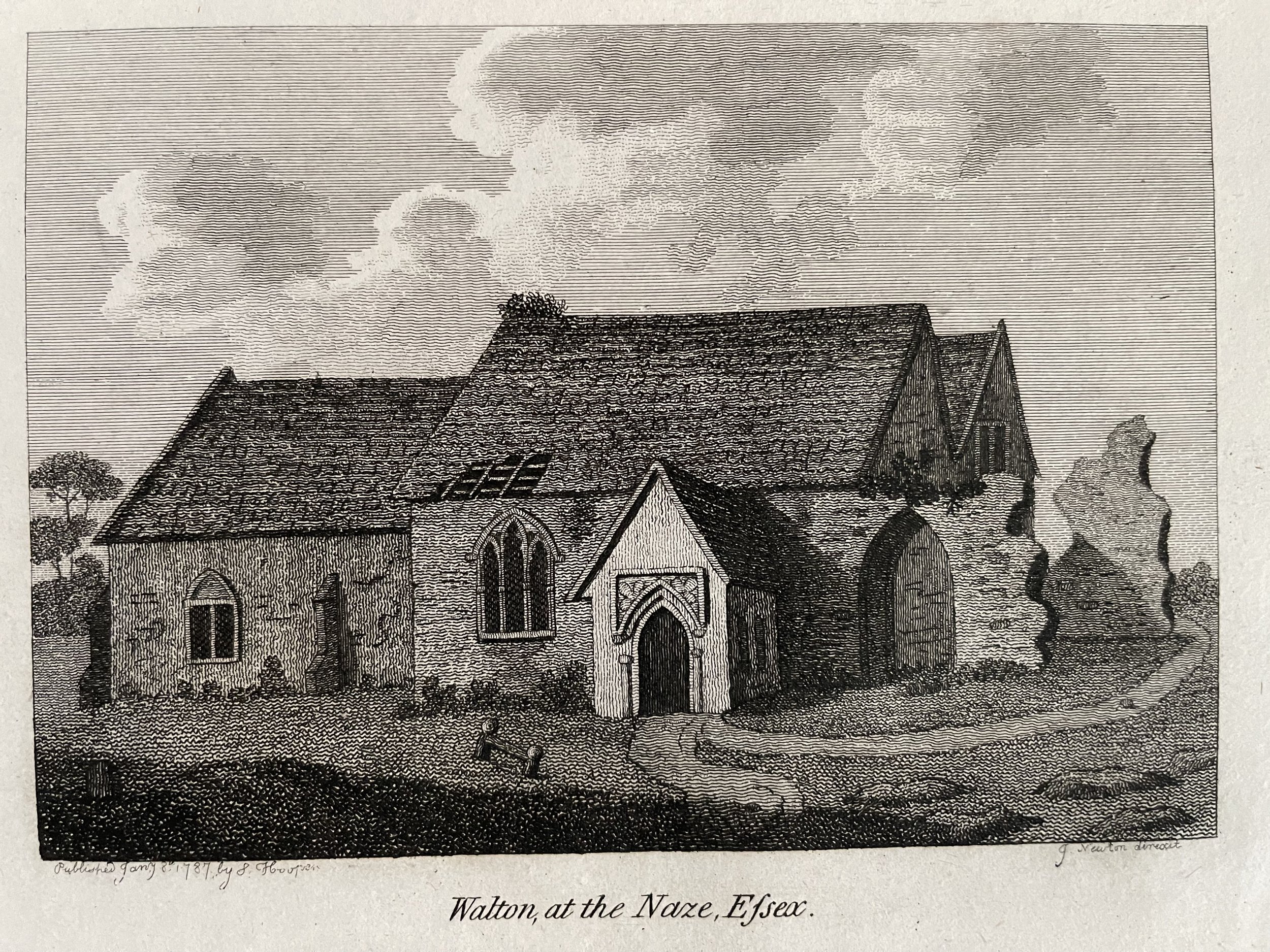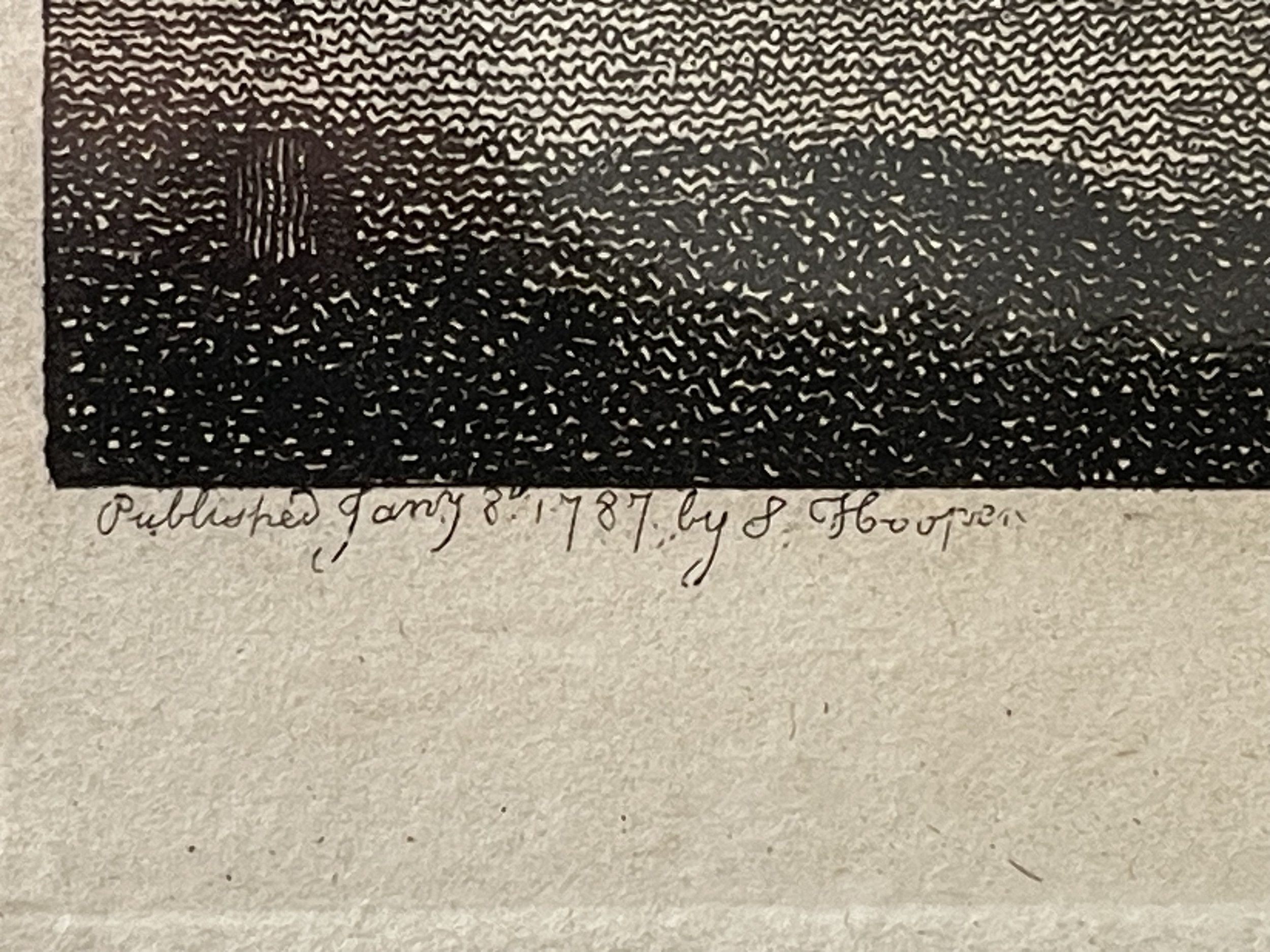Walton-on-the-Naze, Essex England. Church Scene. - Francis Grose / Samuel Hooper and Henry Wigstead / James Newton - 1787
Walton-on-the-Naze, Essex.
Antique print of a church in Walton on the Naze, a small town in Essex, England, on the North Sea coast in the Tendring district. It is north of Clacton and south of the port of Harwich. Antique copper-plate engraving of Walton at the Naze. Dated in the plate Jan 8th 1787.
Walton-on-the-Naze. Antique print of a church in Walton on the Naze, a small town in Essex, England, on the North Sea coast in the Tendring district. It is north of Clacton and south of the port of Harwich. This antique copper-plate engraving is from: ‘The Antiquities of England and Wales’ by Francis Grose. Eight volumes published from 1772. Printed in London for Hooper and Wigstead. Artists and engravers names are recorded below each antique print, together with the date of the engravings execution.
Francis Grose’s interest was in the field of medieval remains, which were beginning to exercise an increasing grip on the public imagination. In 1772, he published the first part of ‘The Antiquities of England and Wales,’ a work which he unashamedly aimed at the popular market. Essentially, it targeted those who wanted to know about antiquities but had neither time nor means to visit them in person, and contained small panoramas of medieval ruins, together with an informative text on a separate page. Sometimes the text was taken from books already published, or from information supplied by other antiquaries (both acknowledged); sometimes Grose collated material himself from which he could work up an article. From 1772 onwards, he also toured the country to visit and draw sites for inclusion in The Antiquities. In all, Eight Volumes of the work were published.
Samuel Hooper - Bookseller, print-seller, publisher (esp. of maps, music), in London. Died 1793.
James Newton - Individual; printmaker; publisher/printer; British; Male - 1748-c.1804. Engraver in London; RA student from November 1769. Worked for book illustration, and after old masters and assisted brother William Newton, architect, with his publication of the English translation of Vitruvius; also worked on Stuart's Antiquities of Athens. - See David Alexander, 'Biographical Dictionary of British and Irish engravers 1714-1820', New Haven and London, 2021
Henry Wigstead - English Magistrate, publisher, businessman, amateur painter & caricaturist. Died 1800
He was a patron and close friend of Thomas Rowlandson, whom he accompanied on sketching trips to the Isle of Wight (1784), Brighton (1789) and Wales (1787) which resulted in subsequent publications for which Rowlandson provided the illustrations. Wigstead exhibited at the RA exhibition of 1785. His style appears to be close to Rowlandson, who create prints of many of his works, often signing them as Wigstead.
Wigstead also ran a successful interior decorating business and in June 1788 was appointed "House painter to His Royal Highness the Prince of Wales". His company worked on the Royal Pavilion for the Prince of Wales (the future George IV) When George III became incapacitated, the Prince hired Wigstead to distribute satirical caricatures across England attacking the king and those in William Pitt the Younger's cabinet who the Prince believed were frustrating his claim to the Regency. Although Wigstead's name was associated with these prints, the recent discovery of payments to Thomas Rowlandson confirm that his friend was the actual artist. Wigstead died at Margate.
Walton-on-the-Naze, Essex.
Antique print of a church in Walton on the Naze, a small town in Essex, England, on the North Sea coast in the Tendring district. It is north of Clacton and south of the port of Harwich. Antique copper-plate engraving of Walton at the Naze. Dated in the plate Jan 8th 1787.
Walton-on-the-Naze. Antique print of a church in Walton on the Naze, a small town in Essex, England, on the North Sea coast in the Tendring district. It is north of Clacton and south of the port of Harwich. This antique copper-plate engraving is from: ‘The Antiquities of England and Wales’ by Francis Grose. Eight volumes published from 1772. Printed in London for Hooper and Wigstead. Artists and engravers names are recorded below each antique print, together with the date of the engravings execution.
Francis Grose’s interest was in the field of medieval remains, which were beginning to exercise an increasing grip on the public imagination. In 1772, he published the first part of ‘The Antiquities of England and Wales,’ a work which he unashamedly aimed at the popular market. Essentially, it targeted those who wanted to know about antiquities but had neither time nor means to visit them in person, and contained small panoramas of medieval ruins, together with an informative text on a separate page. Sometimes the text was taken from books already published, or from information supplied by other antiquaries (both acknowledged); sometimes Grose collated material himself from which he could work up an article. From 1772 onwards, he also toured the country to visit and draw sites for inclusion in The Antiquities. In all, Eight Volumes of the work were published.
Samuel Hooper - Bookseller, print-seller, publisher (esp. of maps, music), in London. Died 1793.
James Newton - Individual; printmaker; publisher/printer; British; Male - 1748-c.1804. Engraver in London; RA student from November 1769. Worked for book illustration, and after old masters and assisted brother William Newton, architect, with his publication of the English translation of Vitruvius; also worked on Stuart's Antiquities of Athens. - See David Alexander, 'Biographical Dictionary of British and Irish engravers 1714-1820', New Haven and London, 2021
Henry Wigstead - English Magistrate, publisher, businessman, amateur painter & caricaturist. Died 1800
He was a patron and close friend of Thomas Rowlandson, whom he accompanied on sketching trips to the Isle of Wight (1784), Brighton (1789) and Wales (1787) which resulted in subsequent publications for which Rowlandson provided the illustrations. Wigstead exhibited at the RA exhibition of 1785. His style appears to be close to Rowlandson, who create prints of many of his works, often signing them as Wigstead.
Wigstead also ran a successful interior decorating business and in June 1788 was appointed "House painter to His Royal Highness the Prince of Wales". His company worked on the Royal Pavilion for the Prince of Wales (the future George IV) When George III became incapacitated, the Prince hired Wigstead to distribute satirical caricatures across England attacking the king and those in William Pitt the Younger's cabinet who the Prince believed were frustrating his claim to the Regency. Although Wigstead's name was associated with these prints, the recent discovery of payments to Thomas Rowlandson confirm that his friend was the actual artist. Wigstead died at Margate.
Walton-on-the-Naze, Essex.
Antique print of a church in Walton on the Naze, a small town in Essex, England, on the North Sea coast in the Tendring district. It is north of Clacton and south of the port of Harwich. Antique copper-plate engraving of Walton at the Naze. Dated in the plate Jan 8th 1787.
Walton-on-the-Naze. Antique print of a church in Walton on the Naze, a small town in Essex, England, on the North Sea coast in the Tendring district. It is north of Clacton and south of the port of Harwich. This antique copper-plate engraving is from: ‘The Antiquities of England and Wales’ by Francis Grose. Eight volumes published from 1772. Printed in London for Hooper and Wigstead. Artists and engravers names are recorded below each antique print, together with the date of the engravings execution.
Francis Grose’s interest was in the field of medieval remains, which were beginning to exercise an increasing grip on the public imagination. In 1772, he published the first part of ‘The Antiquities of England and Wales,’ a work which he unashamedly aimed at the popular market. Essentially, it targeted those who wanted to know about antiquities but had neither time nor means to visit them in person, and contained small panoramas of medieval ruins, together with an informative text on a separate page. Sometimes the text was taken from books already published, or from information supplied by other antiquaries (both acknowledged); sometimes Grose collated material himself from which he could work up an article. From 1772 onwards, he also toured the country to visit and draw sites for inclusion in The Antiquities. In all, Eight Volumes of the work were published.
Samuel Hooper - Bookseller, print-seller, publisher (esp. of maps, music), in London. Died 1793.
James Newton - Individual; printmaker; publisher/printer; British; Male - 1748-c.1804. Engraver in London; RA student from November 1769. Worked for book illustration, and after old masters and assisted brother William Newton, architect, with his publication of the English translation of Vitruvius; also worked on Stuart's Antiquities of Athens. - See David Alexander, 'Biographical Dictionary of British and Irish engravers 1714-1820', New Haven and London, 2021
Henry Wigstead - English Magistrate, publisher, businessman, amateur painter & caricaturist. Died 1800
He was a patron and close friend of Thomas Rowlandson, whom he accompanied on sketching trips to the Isle of Wight (1784), Brighton (1789) and Wales (1787) which resulted in subsequent publications for which Rowlandson provided the illustrations. Wigstead exhibited at the RA exhibition of 1785. His style appears to be close to Rowlandson, who create prints of many of his works, often signing them as Wigstead.
Wigstead also ran a successful interior decorating business and in June 1788 was appointed "House painter to His Royal Highness the Prince of Wales". His company worked on the Royal Pavilion for the Prince of Wales (the future George IV) When George III became incapacitated, the Prince hired Wigstead to distribute satirical caricatures across England attacking the king and those in William Pitt the Younger's cabinet who the Prince believed were frustrating his claim to the Regency. Although Wigstead's name was associated with these prints, the recent discovery of payments to Thomas Rowlandson confirm that his friend was the actual artist. Wigstead died at Margate.
Code : A616
Cartographer : Cartographer / Engraver / Publisher: Francis Grose / S Hooper and Henry Wigstead / James Newton
Date : Publication Place / Date - 1745
Size : Sheet size: Image Size: 20 by 15 cms.
Availability : Available
Type - Genuine - Antique
Grading A+
Where Applicable - Folds as issued. Light box photo shows the folio leaf centre margin hinge ‘glue’, this is not visible otherwise.
Tracked postage, in casement. Please contact me for postal quotation outside of the UK.


